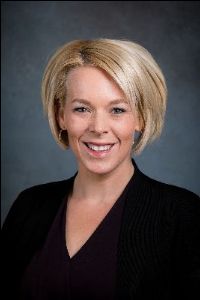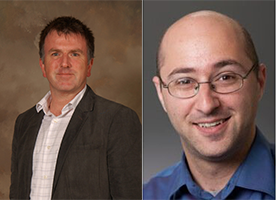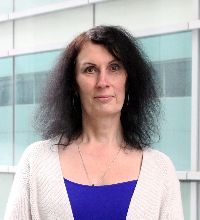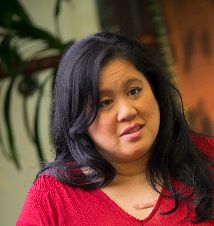[The following notes were generated by Andrea Belovich, PhD.]
The second installment of the Fall 2021 IAMSE Web Audio Seminar series, “Back to the Future: Maximizing Student Learning and Wellbeing in the Virtual Age,” was presented on September 9th by Dr. Rachel Ellaway, Professor of Medical Education and Community Health Sciences and Director of the Office of Health and Medical Education Scholarship at the University of Calgary. In her presentation, “Creating learning entities: Augmentation in health professions education,” Dr. Ellaway discussed the phenomenon of augmentation, and how it can be used as a lens through which to view the practices and philosophies of health professions education.
Dr. Ellaway introduced her webinar as a series of thought experiments intended to help the audience reflect and consider the implications of the augmentation perspective on their own teaching, program development, scholarship, and other educational practices. She began by framing the concept of augmentation as something humans engage in constantly to enhance our intrinsic abilities and to help us engage more effectively with our environment. Examples of augmentation range anywhere from articles of clothing and functional accessories such as spectacles or eyeglasses to technologies that enable remote communication or extended cognitive abilities to professional organizations and communities that expand our influence and access to resources. Furthermore, Dr. Ellaway posited that the state of augmentation is fluid and is subject to change, as she demonstrated by the removal/addition of her own spectacles to alter her ability to perceive visual information.
Dr. Ellaway next raised the question that, since we are always experiencing augmentation, how do we think about it? One framework she provided for the audience was the dichotomy of ability and disability—all humans are simultaneously able in some ways and limited (disabled) in others by our environment and circumstances. Additionally, everyone has abilities that they do not use, as some abilities are limited by the opportunity to engage in them, such as the ability to play a musical instrument being limited by participating in a seminar or meeting. Finally, there are circumstances that prevent us from acting (disabling us) and where our abilities are insufficient to the task at hand. Therefore, the dichotomy of “abled vs. disabled” is, in many ways, an arbitrary one.
To further develop this framework for thinking about augmentation, Dr. Ellaway shared the Human Capabilities Approach, which is a theory developed by Sen and Nussbaum that defines “capability” as one’s ability/competence in combination with the opportunity to use the ability. A corollary of this theory is that one does not intrinsically lack an ability simply because one does not have the opportunity to use it. In this context, augmentation can be understood as a means to change a person’s capability by either changing one’s ability, opportunities, or both. As Dr. Ellaway stressed, augmentation is therefore not limited merely to the addition of factors, but rather includes the removal of obstacles to help a person improve their capability. This applies neatly to education, as an educator rarely can improve a learner’s intrinsic abilities, but instead can add some factors (such as tasks, structure, curriculum) and remove others (such as distractions, complications, and unnecessary details) in order to allow the learner the opportunity to utilize their abilities.
Dr. Ellaway next discussed that changes in augmentation can occur either with or without our input. Involuntary changes of augmentations can include sickness, luck, theft, travel impediments, or other external circumstance beyond our control can change our abilities. However, we can also be deliberate and selective in these changes to make sure we are doing the best job we can. For example, when engaging in teaching, learning, scholarship, etc., we are constantly selecting factors to include (e.g., spectacles, technologies) and exclude (e.g., distractions) to help us complete the task at hand. This selection process is often so integrated into our lives that is only apparent one is unable to do so. To further demonstrate this point, the audience was encouraged to reflect on the effects of the COVID-19 pandemic, where access to augmentations such as travel, communication, and relationships was either diminished or removed. By taking away or reducing augmentations previously taken for granted, the COVID-19 pandemic has provided us with the framework of absence to engage with the concept of augmentation.
After discussing what augmentation is, Dr. Ellaway next demonstrated how this concept applies to healthcare professions education by introducing the idea of entities. Entities emerge when a person or persons experience differing states of augmentation which each produce a distinct profile of capabilities. As an example, Dr. Ellaway asked the audience to consider a physician practicing in three different environments with differing augmentations: a multiprofessional hospital system, a rural medical clinic, and a wilderness backpacking trip. The physician is the same person with similar intrinsic abilities in each setting, but they possess different capabilities based on their resources and surrounding environment (augmentations). Therefore, the physician can be thought of as three distinct entities depending on their augmentations. As healthcare professionals are expected to switch between entities and adapt to the presence/absence of a variety of augmentations in practice, Dr. Ellaway raised the question of whether our educational programs are training them to do this.
In terms of admission to healthcare education programs, variance amongst entities should be considered when attempting to assess an applicant’s abilities. For example, three applicants may have comparable intrinsic abilities, but depending on socioeconomic status, they may have different opportunities and therefore, be entities with differing capabilities. Thus, it is essential to consider entities when distinguishing between an applicant’s intrinsic abilities and their access to opportunities. Furthermore, entities are also important to consider during the assessment of a learner’s abilities. If a learner’s capability changes between a strictly proctored examination environment and a clinical setting where augmentations such as technologies, information databases, and colleagues’ consultation are available, how accurately does the proctored examination assess the learner’s true abilities? As educators, it imperative that we consider not only the entities created by socioeconomic status, but also any entities that we ourselves create for our learners.
Dr. Ellaway next explored the idea that creating augmented entities also creates moral and ethical dilemmas. For example, which augmentations confer too much advantage? What is considered “too much” advantage and what is considered “normal” advantage? Should we create situations that raise individuals from “below normal” to “above normal,” and should we require individuals naturally operative at “above normal” to reduce their intrinsic state to “normal”? Dr. Ellway recognized that while humans understand that some augmentation is acceptable and too much augmentation is unfair, it is hard to define a standard, acceptable, tacit set of morals on the subject. She also pointed out the, while education is a field that values fairness and equity, it rarely reflects on what augmentation actually is, what its implications are for both educators and learners, and how it may be best utilized.
To conclude the webinar, Dr. Ellaway shared the following manifesto regarding augmentation, entities, and education: “States of augmentation in learning should map to states of augmentation in practice. We should teach, assess, and model across many different states of augmentation. We should be more reflective of and deliberate in our uses of augmentation. We should be more aware of and critical of the consequences of different state of augmentation on learners and learning, on teachers and teaching, and on education and practice as a whole.”






